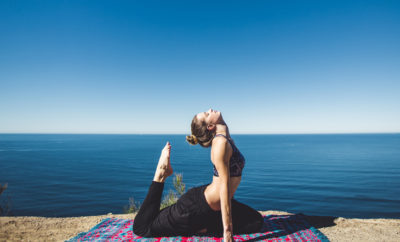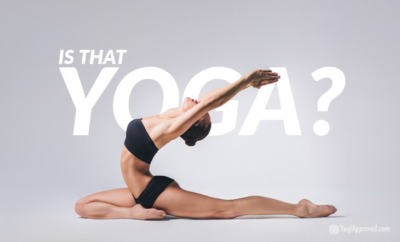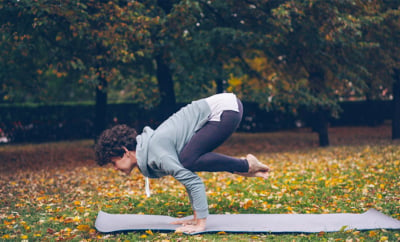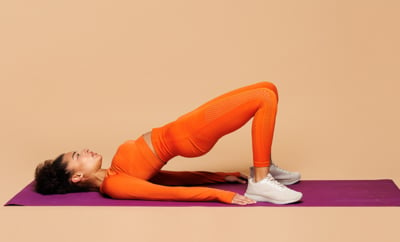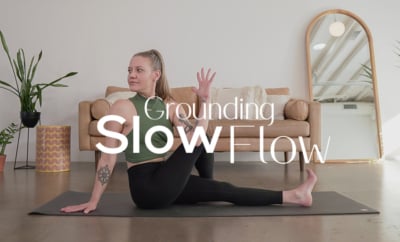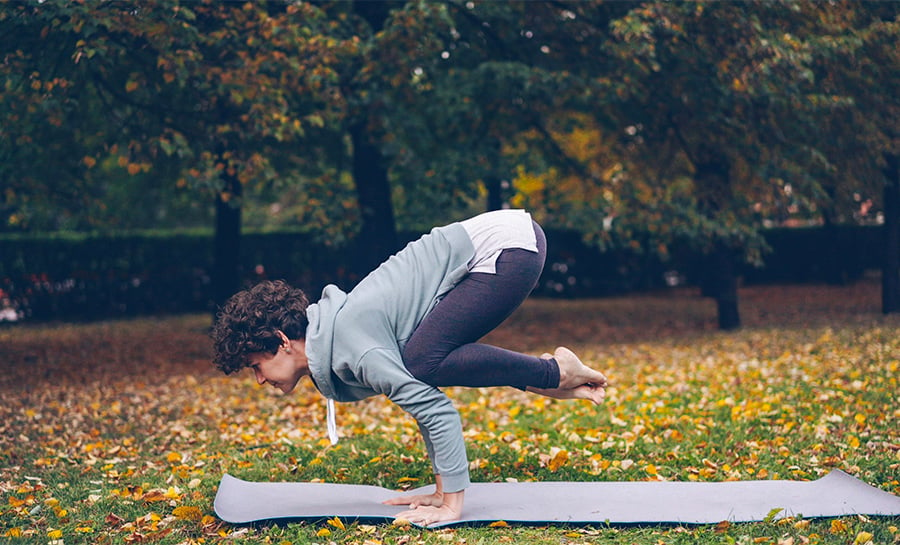A Quick Guide to the Ashtanga Yoga Practice, Background + Benefits

ashtanga yoga guide
Ashtanga Yoga is a dynamic style of yoga that quickly builds strength, increases flexibility, and develops cardiovascular fitness with breath-initiated movements between the postures.
The History of Ashtanga Yoga
Ashtanga Yoga can date back to Guru Rama Mohan Brahmachari who lived in a cave within the Himalayan mountains near Manasarovar, Tibet in the 1900’s. Brahmachari taught over 700 yoga postures from the ancient yogic text, the Yoga Korunta.
His most acclaimed student, Sri Tirumalai Krishnamacharya, traveled to Tibet and stayed with Brahmachari for seven years, gaining knowledge and the teachings of yoga. Krishnamacharya then took his lessons to Mysore, India where he taught many students, including B.K.S. Iyengar and Sri K. Pattabhi Jois.
Pattabhi Jois continued to teach Ashtanga Yoga and played a large part in Ashtanga becoming popular in the West. He also opened a school in Mysore that is still thriving today. Some of his students include Sharon Gannon, David Life, Bryan Kest and Kino MacGregor.
The Philosophy of Ashtanga Yoga
In Sanskrit, “ashta” means eight and “anga” means limbs. Therefore, Ashtanga Yoga refers to the eight limbs of yoga – which were enumerated over 2000 years ago by the great yogic sage, Patanjali in the Yoga Sutras.
Want to learn more about the Yoga Sutras? Read this article on 20 Yoga Sutras Translated and Explained.
Here’s a quick and easy breakdown of the Eight Limbs of Yoga:
1. The Yamas
- Ahimsa: non-violence
- Satya: truthfulness
- Asteya: non-theft
- Brahmacharya: moderation
- Aparigraha: non-hoarding
1. The Yamas
- Ahimsa: non-violence
- Satya: truthfulness
- Asteya: non-theft
- Brahmacharya: moderation
- Aparigraha: non-hoarding
Sound interesting? Check out How to Use the Yamas to Re-Focus Your Life for more insight.
2. The Niyamas
- Saucha: cleanliness
- Santosha: contentment
- Tapas: discipline
- Svadhyaya: self- study
- Ishvara Pranidhana: surrender to the Divine
Check out Find Ways to Better Yourself: A Guide to the Niyamas for more insight.
3. Asana:
the physical practice of yoga
4. Pranayama:
internal, external and fixed movements of the breath
5. Pratyahara:
withdrawal of the senses
6. Dharana:
concentration
7. Dhyana:
meditation
8. Samadhi:
absorption
Interested in learning more about the Eight Limbs of Yoga? Check out Do You Practice the Eightfold Path of Yoga? Why it Matters.
Now that we’ve learned about the history, philosophy and premise of Ashtanga Yoga, we can dive further into the practice itself. In addition to the three series of Ashtanga Yoga, there are a few more foundations of the Ashtanga practice.
Here are the 5 main aspects of Ashtanga Yoga:
1. The Ashtanga Vinyasa
1. The Ashtanga Vinyasa
The Ashtanga Vinyasa Yoga method includes an Ashtanga Vinyasa between each individual posture to create internal heat in the body, stretch the body, cultivate deep breathing, and develop cardiovascular fitness.
The Ashtanga Vinyasa consists of:
- An exhale into Chaturanga Dandasana (Four-Limbed Staff Pose)
- An inhale into Urdhva Mukha Svanasana (Upward Facing Dog Pose)
- And an exhale into Adho Mukha Svanasana (Downward Facing Dog Pose)
2. Ujjayi Pranayama
In Sanskrit, “prana” means life force energy and “yama” means control. Ujjayi Pranayama is used throughout the entire Ashtanga Yoga practice. The continuous focus on the breath strengthens the lungs and diaphragm and induces a deeply meditative experience.
How to practice Ujjayi Pranayama:
- Constrict the back of the throat and inhale through the nose to create an audible sound – some people think it sounds like the ocean, others compare it to Darth Vader
- Pause after your full inhale
- Keep the throat constricted, then exhale through the nose
- Pause after your full exhale
- Repeat
3. The Primary Series
The Primary Series is known as Yoga Chikitsa or Yoga Therapy and is said to eliminate disease from the body. The first series is strengthening and relaxing, and is also the gateway into the practice of hundreds of yoga postures.
-
The Primary Series includes:
- The beginning sequence (Sun Salutations and standing postures)
- A unique sequence of seated postures
- Forward bends
- Twists
- Hip openers
- The finishing sequence:
- Shoulderstand
- Fish Pose
- Headstand
- Child’s Pose
- Lotus Pose with breathwork
- Corpse Pose
4. The Intermediate Series
The Intermediate Series is called Nadi Shodhana, the nadis are the subtle energy channels that exist throughout the entire body, and “shodhana” means to purify or cleanse. This series is uplifting and energizing.
The Intermediate Series includes:
- The same beginning sequence as the Primary Series
- Backbends
- Arm balances
- Inversions
- The same finishing sequence as the Primary Series
5. The Advanced Series
The Advanced Series is known as Sthira Bhaga, “sthira” means to stabilize and “bhaga” means radiance. The Advanced Ashtanga Series develops inner strength and cultivates compassion to leave you feeling empowered and awakened. There are over 100 yoga postures in the Advanced Series. Below are a few examples.
The Advanced series includes:
- Deep hip openers
- Advanced arm balances
- Deep twists and binds
- Deep backbends
Practicing Ashtanga Yoga – The Takeaway
Ashtanga Yoga teaches patience and persistence, as it may take several years to learn the postures of the Primary Series. Once the Primary Series is mastered, the Intermediate Series is taught one posture at a time.
Ashtanga Yoga is practiced six days a week, excluding Saturday. Practice is also suspended on the New Moon and Full Moon and the first three days of a woman’s menstruation.
Ashtanga Yoga is a gateway into the practice of hundreds of yoga postures. Everyone can practice Ashtanga and with a regular practice, the benefits are abundant. This potent form of yoga is a transformational experience physically and mentally. Enjoy the journey, and namaste!


This Month's Letter
From the Editor
Monthly motivation and food for
thought from our founder.



